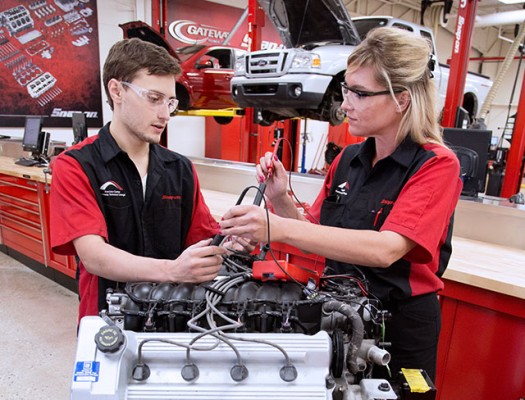
So where is Fisker's production? There are rumors that Fisker cars were made in Detroit. However, it is still unknown to many. The company announced that a new round will begin in April 2012. For more information about Fisker cars, read on. We have some interesting facts as well. Here are the addresses for Fisker factories:
Toronto
Canadians might be curious about where Fisker cars are manufactured. Well, the company actually makes their cars in Toronto. Recent acquisitions saw the company sold to a Chinese corporation. In 2016, the company introduced a hybrid model called the Revero. Now, all-electric cars will be available. While it's not clear when this new model will be available, Fisker of Toronto will make the cars there.

Fisker's electric cars are made in Toronto. The company is also partnered with the Magna manufacturing plant, which produces vehicles such as the BMW 5 Series and Mercedes-Benz G-class SUV. The company has a goal to build 50,000 cars before 2023. However its CEO is certain that production will triple. Magna, which manufactures the G class sedan and G-class SUVs by Benz-Benz G Class SUVs, is also held by Magna.
Wilmington Assembly Plant
Fisker car manufacturing is a fascinating story. The plant is also home to GM's former Buick-Oldsmobile-Pontiac assembly division, which built millions of vehicles in Wilmington. After defaulting on federal loans, the company declared bankruptcy. The plant's last remaining vehicle is the Pontiac Solstice, a convertible that was built at the facility from 2001 to 2011.
GM's Wilmington Assembly factory was shut down last spring. The company now owns it for $18million from the Motors Liquidation Department. This plant was home to the Pontiac Solstice and Saturn Sky, which ceased production in the spring of 2013. Fisker Automotive will make affordable plug-in electric cars at the plant. Project NINA is also housed in the plant. This plug-in hybrid sedan will retail for under $40k, after taking into account federal tax credits.
Magna
Magna Fisker looks like the right car for the future. Despite its high starting price, the Ocean EV has a volume comparable to a BMW 5-Series. It costs $379 per month to lease, and Fisker expects to reach cashflow positive status by 2023. Magna has a 6% stake in Fisker, but it is not cash. It is a partnership for engineering services and does not require the delivery of cars immediately.

Magna’s electric vehicle design will be used as the basis for the OceanEV. Fisker has modified this to suit his own needs. This will allow for a lower price, a better range and easier manufacturing. The Ocean SUV will debut on the market with a MSRP of $37.499, which includes tax credits and EV subsidies. It will have a range approximately 270m and be priced below EUR32,000.
FAQ
How long is an apprenticeship for an automotive mechanic?
An automotive mechanic apprenticeship takes around three years to complete. This includes two year at school as well as two years as an apprenticeship. The first year is spent learning all aspects of the trade, including theory, practical skills, and safety procedures. You'll also learn the safe and efficient use of tools during this first year. After you have completed the first year of training, you will be able to spend an additional year on-the job learning different trades. These periods will also give you the chance to take formal courses.
The final year is dedicated to earning certifications and qualifications in the field. These include NVQs. They are awarded after passing exams on specific topics within the industry. The HNCs (Higher National Certificates), on the other hand, cover general subjects like customer service and management. City & Guilds certificates can be obtained for individuals who want to learn certain trades.
What qualifications are required to become a truck mechanic
You don't have formal qualifications for this role, but you are very experienced working on trucks and engines. Your experience is valuable because it allows you to diagnose problems quickly, efficiently and effectively.
You also have an excellent knowledge of diesel technology which will help you to understand what parts are needed to repair our vehicles.
How long is an automotive course?
An automotive course is three years long.
The first year is spent on theory, learning all about cars. Practical training is the second year. You will learn to drive, fix engines and perform other tasks around the car. You will spend the final year working in a local garage to gain real-world experience.
Is it worth learning to be a mechanic?
The answer to this question will depend on your goals for life. If you are looking for financial gain, then yes. However, if purpose and meaning are what you seek, then no.
It's not worth learning mechanics if you don’t have the skills. You'll waste your time. It will not make you rich. It won't make your name famous. It's unlikely that it will change your life.
You would need to spend years learning how to do everything properly. Also, you would need to hire someone else to fix it if it broke down. It's the reason most people don't bother. They find something else to do.
You can make a lot of money if you are looking to do well. But if you want to live a meaningful life, stay away from the mechanic's industry.
What are the different types of jobs available in car mechanic?
For car mechanics, there are three main areas for employment:
-
Automotive repair shops
-
Dealerships
-
Independent garages
Automotive repair shops
Most people think of this as the first step to becoming a mechanic. In fact, it's probably the easiest way to get started. Either you can work in a shop that is owned by another person or start your own business.
If you decide to work at a shop, you'll need to apply to join a union. Once accepted into the union you will be trained by the union.
You'll be ready for work once you have completed the training.
Registering with the government is required if you intend to open a garage. After you have registered, you will need to meet certain standards.
When you've registered, you'll be given a license to operate your garage.
Your license will allow you to sell spare parts and do minor repairs. You can't fix major engine problems with your license.
In addition to selling spare parts, you'll also be expected to offer advice and guidance to customers.
Dealership jobs
Many dealerships have mechanics who are experts in one particular area. For instance, they may only be qualified to fix brakes or change tires.
Some dealerships have the option to hire general mechanics who can take care of all aspects.
Many of these positions require that applicants undergo training before they are allowed to work. This allows employers to pick the right candidates for their jobs.
Some dealerships even recruit graduates straight from university. These graduates already know the basics of mechanical engineering and therefore have no problem learning about cars.
Independent garages
Independent garages don't belong to any particular dealership. They tend to be focused on high-quality service.
Independent garages have the ability to afford higher wages, as they aren’t associated with any one company. This means that these jobs are usually more lucrative than those at dealerships.
Independent garages can be just as good places to work, but this does not mean they are better. Many business owners prefer to own their businesses and not delegate the responsibility to others.
This could lead to you working long hours with little control over your day.
Also, expect to make lower wages than if your job was at a dealership.
You can switch jobs easily. Ask your employer if you would like to work as a mechanic at a dealership.
Alternatively, if you'd like to work at an independent garage, then you could try applying directly to the owner of the garage.
It's not always easy to find a job. You can earn more depending on many other factors.
You might also consider the vehicle type you repair, and whether extra labor is charged.
Statistics
- There were 749,900 jobs available for automotive service technicians and mechanics in 2016, which is expected to grow by six percent through 2026. (jobhero.com)
- According to the BLS, the median annual salary for automotive service technicians and mechanics in the United States was $44,050 in May 2020. (uti.edu)
- Apprentice mechanics earn significantly less hourly than mechanics who have completed training, with a median wage of approximately $14.50 an hour, according to PayScale. (jobhero.com)
External Links
How To
How to correctly diagnose your vehicle for repairs
To determine if your car needs repairs, you should first look at the symptoms that your car presents. Next, you can follow these steps in order to diagnose your car.
-
Check engine lights. Check the dashboard light indicators such as the engine light indicator, the oil pressure gauge, the battery light indicator, the coolant temperature gauge, and the RPM gauge. If any of these indicators have been flashing continuously for several days it could mean that there is something wrong with your vehicle.
-
Check the treads of your tires. Tires that are worn can cause issues with handling and braking. Also, inspect the treads of your wheels. They should be clean, and they should be smooth. It is best to take off the wheels and remove them. Check the tread condition with a flashlight.
-
Pay attention to the level of your brake fluid. You must keep track on the level of brake fluid in your vehicle. This will ensure that your brakes run smoothly. If your brake fluid level is low they might not work properly when you apply pressure.
-
Check the suspension system. Vehicles usually have a suspension system that helps absorb shocks and vibrations while driving. It allows for better control, smooth acceleration, and deceleration. It might feel uncontrollable or wobbly if your vehicle is suffering from a suspension problem. Try putting some weight on your front or rear axle to determine if you have a suspension problem.
-
Examine your steering column. The steering columns are what connect the steering knob to the rest. Many accidents can cause damage to steering columns. You should replace the steering column if it is loose or weak.
-
Pay close attention to the exhaust tube. The exhaust pipes transport gases from the combustion chamber to outside. If the exhaust pipe is damaged or leaks, harmful fumes can enter your cabin. Also, if your tailpipe is bent, you should fix it immediately.
-
Take a look at the underside of your hood. Check under your hood for any unusual or missing components. You could have fluids leaking from the engine. In addition, if you notice an unusual smell coming from your engine compartment, you should contact a professional technician.
-
Make sure to check the air filter. The vehicle's outside environment may cause the air filter to collect dust and debris. A dirty filter can lead to a poor vehicle's performance. Replace your air filter regularly.
-
Check the fan belt. The fan belt that connects your vehicle to the transmission is called the engine fan belt. If it breaks, the engine won't turn over. Replacing the belt is simple. All you need is a screwdriver and some pliers.
-
Make sure you inspect the radiator hoses and hoses. The radiator hose carries water from the radiator to the engine. It can cause hot liquid to leak onto the engine if it is damaged or cracked. You only need a pair of needle-nose pliers and a small wire brush to repair the hose.
-
Be sure to inspect your windshield wipers. Windshield wipers use electricity for snow and rain removal. They can leave streaks on your windows glass if they stop working. Simply change the washer oil to fix the problem.
-
Check the battery cables. The battery cables provide power for the electrical systems in your car. Before you change batteries, disconnect the positive cable. Failure to do so can damage your alternator.
-
Be sure to check your headlights. Headlights illuminate the road ahead of you. If they don't work properly, it can cause poor visibility. Check the bulbs to see if they've burned out.
-
Pay attention to the lights. When you approach them at night, the lights warn other drivers. One that doesn't work could cause you to be distracted, and possibly lead to an injury.
-
Check the brakes. Before you collide with another vehicle, brakes will slow down the car. You could lose control of the car and cause a crash if they don't work properly.
-
Change the oil. Keep your engine lubricated with oil. It protects metal parts and prevents them from wearing too quickly. It is recommended to change the oil each month.